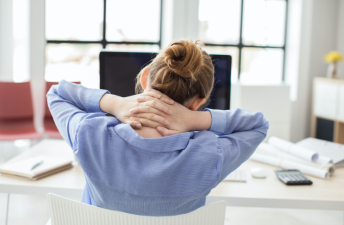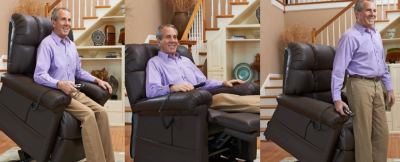The June 2017 issue of the American Journal of Orthopedics and Sports Physical Therapy, an international medical authority, pointed out that the incidence of arthritis among fitness runners is 3.5%, while the incidence of arthritis among sedentary people is 10.2%. Are you surprised to see this data? Sitting and playing with your phone, watching TV, eating, reading newspapers, playing cards... It seems that your body is very relaxed, but over time, your joints will become stiff like rusty machine bearings.

The June 2017 issue of the American Journal of Orthopedics and Sports Physical Therapy, an international medical authority, pointed out that the incidence of arthritis among fitness runners is 3.5%, while the incidence of arthritis among sedentary people is 10.2%. Are you surprised to see this data? Sitting and playing with your phone, watching TV, eating, reading newspapers, playing cards... It seems that your body is very relaxed, but over time, your joints will become stiff like rusty machine bearings.

And the harm of sitting for a long time is not just hurting your knees
- Sitting for a long time hurts your brain and causes Alzheimer's disease
If you sit for 1 hour, blood will be concentrated in the lower limbs, circulation will be weakened, the brain will be insufficiently supplied with blood, hypoxia, dizziness, low mood, reduced thinking vitality, and even an important factor in Alzheimer's disease.
- Sitting for a long time hurts your heart: heart function declines
Sitting for a long time will slow down blood circulation, decline heart function, and cause myocardial atrophy. For middle-aged and elderly people with arteriosclerosis and other diseases, long-term sitting will cause slow blood circulation, induce myocardial infarction and cerebral thrombosis.
- Sitting for a long time hurts blood vessels: arteriosclerosis
Long-term sitting reduces fat burning and increases cholesterol, which may clog the heart and blood vessels, increasing cardiovascular and cerebrovascular diseases. Sitting for a long time, calcification accumulates in the arteries, causing arteriosclerosis. Sitting for an extra hour a day increases the risk of coronary artery sclerosis by 12%.
Sitting for a long time reduces leg muscle contraction, slows blood flow in the lower limbs, and increases the incidence of thrombosis. People who sit in a fixed position for more than 3 hours a day have a 2-fold increased risk of deep vein thrombosis in the lower limbs. Sitting for more than 12 hours continuously increases the risk of pulmonary embolism, especially for middle-aged and elderly people with high blood lipids and high blood viscosity. Long-term sitting is a potential terrible risk factor.
- Sitting for a long time hurts the mind: dizziness
Sitting for a long time slows down blood circulation, and can also lead to insufficient blood supply to the brain, hurting the mind and brain, manifested as fatigue, and dizziness.
- Sitting for a long time hurts bones: neck, shoulder, waist and back pain
The neck, shoulders, waist and back are in a tense and fixed posture for a long time, which will not only cause poor local blood circulation, but also cause stiffness in the neck, shoulders, waist and back, soreness and pain, headaches and cervical spondylosis.
- Sitting for a long time hurts the lungs: affects the blood supply to the heart and lungs
Sitting for a long time with little exercise, the lungs cannot be effectively exercised, which will affect the blood supply to the heart and lungs. Common elderly lung system diseases such as emphysema infection are mostly related to reduced lung function.
- Sitting for a long time hurts the pancreas: diabetes
When cells are in idle muscles, the pancreas reacts slowly and is prone to produce more insulin, leading to diabetes. Long-term sitting increases the risk of type 2 diabetes by 112%.
The 2016 version of the guidelines issued by the American Diabetes Association clearly pointed out that everyone should reduce the time of sitting, especially avoid sitting for more than 90 minutes.
- Sitting for a long time hurts the stomach: loss of appetite
Sitting for a long time can easily cause slow gastrointestinal motility, reduced secretion of digestive juices by the digestive glands, loss of appetite and other symptoms, and aggravate people's digestive system symptoms such as abdominal distension, constipation, and indigestion.
- Sitting for a long time hurts the intestines: colon cancer
People who sit for a long time have weaker and slower intestinal and stomach motility, and harmful ingredients are easily retained in the colon, irritating the intestinal mucosa. In addition, the blood circulation in the abdominal cavity, pelvic cavity, and lumbosacral region is poor, and the intestinal immune barrier function decreases, increasing the risk of colon cancer. "Nine out of ten people have hemorrhoids", and sitting for a long time can also easily lead to hemorrhoids.
- Sitting for a long time hurts life: pulmonary embolism
The American Cancer Society released the latest research results of 120,000 people in 14 years. Sitting for more than 6 hours a day may increase the risk of early death, and the risk is higher for women.
Australian researchers found that compared with people who sit and watch TV for more than 4 hours a day and watch TV for less than 2 hours, the risk of death from cardiovascular and cerebrovascular diseases increases by 80%, and the risk of death from other causes increases by 46%.
Develop good habits to avoid the harm of sitting for a long time
Old people's ligaments begin to stiffen, muscle ductility deteriorates, bones degenerate, and overall function is declining. "People must move to live." To resolve the harm of sitting for a long time, there is actually one word: move.
- Correct sitting posture
Maintain a correct sitting posture, with your back straight and shoulders naturally drooping. You can put your elbows on both sides. If the chair is too soft, it may compress the prostate. You can change to a slightly harder chair. Adding a cushion on the back can reduce the pressure on the waist and avoid crossing your legs.
- Walk around frequently
To ensure that you do not sit for too long, it is recommended to take short breaks, about 20 to 30 minutes each time. It is best to get up and walk around. Even if you are sitting, you can bend your waist, lift your shoulders or take a deep breath to relieve muscle tension.
- Take a few steps when TV commercials are playing
Even if you walk at a snail's pace, you burn twice as many calories as when you sit. Of course, more intense exercise is better.
- Tiptoe
In daily work and life, especially when your lower limbs are sore and weak after sitting or standing for a long time, you can use the tiptoe method to exercise. Because when you tiptoe, the contraction and squeezing of the muscles at the back of the calves on both sides will promote the return of blood in the lower limbs of the exerciser, accelerate blood circulation, and prevent varicose veins in the lower limbs.
- Sit with one leg raised
On a harder chair with a backrest, tighten your abdomen, lift one leg until your leg is sore and then switch to the other leg. This can exercise the quadriceps of the thigh that are rarely exercised.
- Hold a mineral water bottle between your knees
Open your legs to the width of a fist, hold the bottle, and lift your heels for two minutes. This small action can exercise the muscles around the knees. When exercising, the blood supply will be increased, which will remove some wind and cold and treat knee pain.
- Put a pillow under your feet
For people without heart disease, you can put a pillow under your feet when sleeping to help blood return and improve lower limb edema. You can also soak your feet appropriately to promote blood flow.
Remember, this is not simply doing more exercise. The obvious fact is that long periods of sitting, even regular exercise, can be fatal. Although standing for long periods of time is impossible and unrealistic for most of us, breaking the habit of sitting for long periods of time with standing, walking and leg exercises can minimize its negative effects. Bottom line: stand up and start moving.


